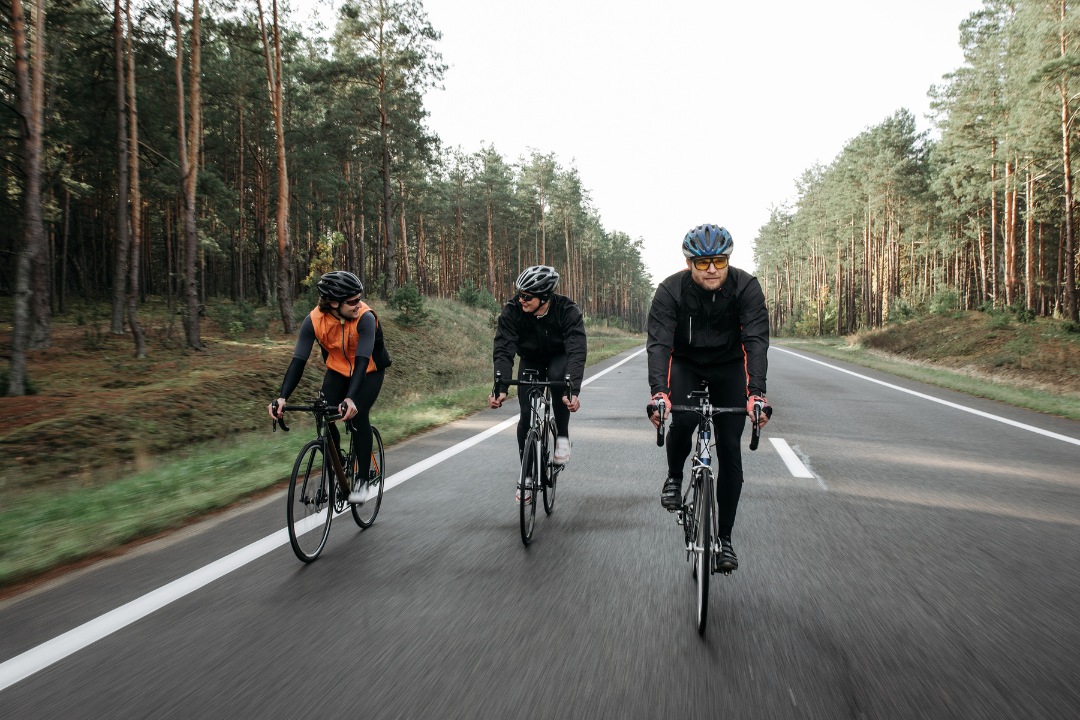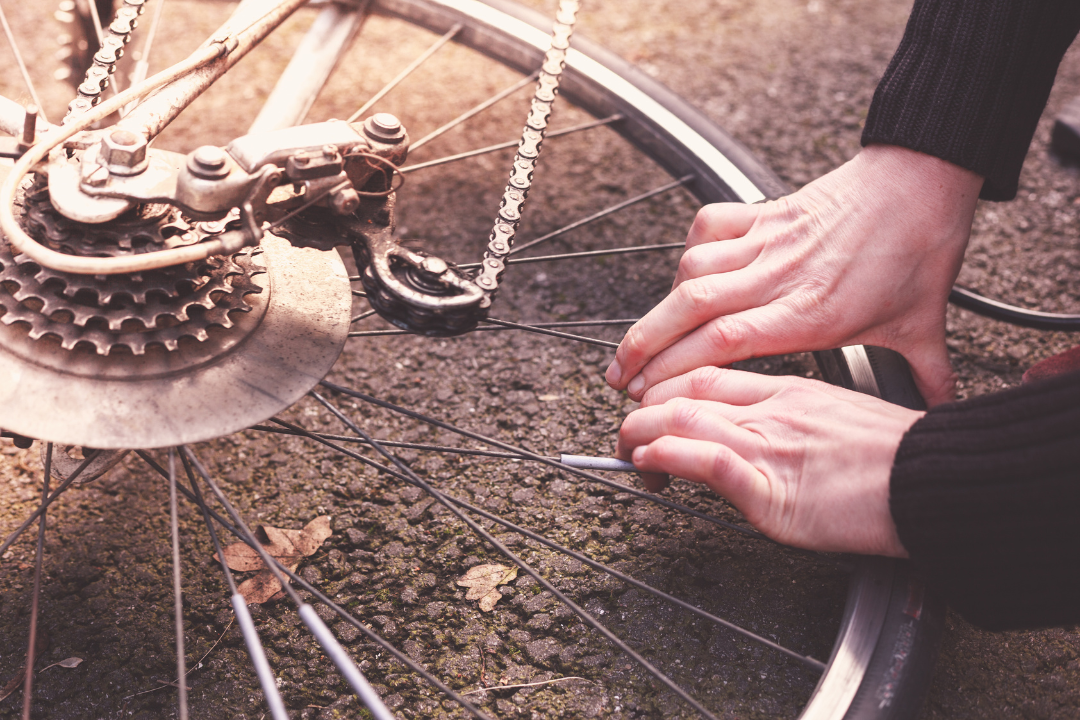Cycling Accidents: 10 worst UK areas for cycling incidents
Posted by Tom on 15th Nov 2022
As you know all too well, the autumn and winter months bring colder (and wetter) weather conditions, alongside darker evenings, which provide many highlights. For one, you can snuggle up in your dressing gown with a hot mug of cocoa!
But if you’re a cyclist, these seasons can be a little trickier out on the roads, making riding more difficult and potentially dangerous. We want riders to be as safe as possible when out cycling, so here at GTSE, we decided to put our heads together and compile the best tips for safe cycling this autumn/winter.
In doing this, we wanted to delve a little deeper and find out which areas in the UK are most dangerous for people heading out on two wheels. By looking into local authority data from 2012-2021, we discovered which areas involved the most casualties and more. And we even gathered some expert insights from bike specialist insurer, Cycleplan!
So, just read on to uncover the worst UK areas for cycling accidents, alongside helpful tips to prevent you from hanging your helmet up any time soon! Without further ado…
Surrey takes the crown as the worst area for cycling accidents
Based on the number of casualties recorded in the past 10 years, from 2012 to 2021, we can reveal the worst place for cycling accidents in the UK. South East England county, Surrey, took the crown – being the worst area for cycling accidents, with 5,254 casualties being reported.
In second place is Hampshire (4,145), followed by Westminster (3,983) and Kent (3,711). With cycling being a cheaper way to travel in the London area and a higher concentration of car/bike traffic, it’s not surprising this area featured in the top 10.
What’s more shocking is that Surrey saw more cycling accidents, although this location is home to the cycling hotspot, Surrey Hills. Surrey Hills is often frequented by London cyclists (as it’s one of the closest places to venture to for a leisurely ride), and Box Hill here is a popular climb amongst avid cyclers. So with more cyclists venturing to these spots, this is likely the reason for increased accidents.

Lancashire makes the list
Taking the fifth spot, with 3,306 cycling incidents occurring over the last 10 years is North West England county, Lancashire. And Lancashire was certainly more surprising to see when compared to the data from Southern areas since the population is smaller! Then in sixth place is Lambeth (3,306).
Other top 10 areas in the UK for cycling incidents
Cambridgeshire is one of the best places in the country to cycle according to Cambridgeshire City Council – and with more incentive to cycle to work, university or for leisure, it’s not surprising that this spot came in seventh place (3,188). Because the more cyclists there are, the more accidents (much like motorists).
Next up is Southwark (3,144) and West Sussex with 3,000 reported casualties, as well as Wandsworth with 2,955. But coming in 10th, taking the bottom spot, is Oxfordshire (2,868). Boasting great cycling routes which encourage residents to get out on two wheels, as well as being a big student city, there will likely be more riders in this UK area, and with a higher population comes an increased chance for accidents.
UK's safest areas to cycle in
As well as finding the top worst areas for cycling accidents, we found the safest spots to cycle in. And we can reveal that the Isles of Scilly is the safest, with just two cycling-related casualties recorded in the last ten years! After that, it’s the Shetland Islands (5) and Comhairle nan Eilean Siar (6).
Then in fourth place is the Orkney Islands, with accidents jumping 10% (as 16 casualties were recorded). Next up is London Airport (Heathrow), coming in fifth (27), followed by Blaenau Gwent (45), Rutland (52) and Inverclyde (54).
*Please note that the safest areas look at absolute numbers meaning that the areas highlighted also have quite small populations.

Top tips on bike safety in autumn/winter

Now you know the stats, it’s time you discovered the best ways to stay safe on your future rides. Whether the route is a short or long one, you’ll want to speed past the scenery without worrying about potential accidents. Well, specialist bike insurer, Cycleplan, gave their insights on staying safe this year, to prevent spikes in cycling accidents. So make sure you make a mental (or physical) note of each!
1. Use reflective equipment and lights
We all know that winter consists of shorter days and not much brightness. Being visible to other road users at all times is vital—so kitting out your bike with lights and wearing Hi-Viz gear is always a wise choice.
In fact, it’s a legal requirement for cyclists to use lights
when riding on a public road between sunset and sunrise. However, they needn’t
cost a fortune, and you can usually find some pretty good deals on the market.
2. Lower your tyre pressure
While tyres with high pressure are great during spring and summer, winter is a different story. When there’s ice, slush and snow on the road, high tyre pressure can actually reduce your bike’s grip on what’s already a slippery surface.
The less grip your tyres have, the less stable you are on
the road, and this can be a recipe for disaster in bad weather. However, by
simply lowering your tyre pressure, you allow more of the tyre to ‘flatten’
into the road surface, thereby providing more grip and control.
3. Fit mudguards
Though you might not normally use mudguards, it’s well worth doing so during the winter.
Without them, you could find yourself drenched in ice-cold puddle water and snow that gets kicked up from the path - definitely not what you want, especially if you still have a fair distance to travel.
4. Clean your bike before and after rides
Regularly cleaning your bike is good practice all year round, but especially in winter. After a ride, there’s every chance your bike will be caked in snow along with freezing water, mud, grit, and everything else.
The grit used on roads contains salt, which can cause corrosion on your bike if left untreated. However, getting into the habit of cleaning your bike before and after use can easily prevent this.5. Check your brake pads
Your brakes work harder than normal in winter as they battle against the snow, ice, and general winter nastiness on the road. Stopping distances are also much longer in bad weather, so your brake pads must be in tip-top condition to cope.
It’s worth making sure they are before you head out. And if they’re not, replace them.
GTSE’s top cycling tips
And we have some pointers of our own to help you cycle in safety!

Use cable ties for tyres and makeshift mud flaps
Cable ties can be used quite effectively in the winter months when it snows to help add a quick extra level of grip to tyres that might otherwise slip in the snow. If you do try this one point to take into account is the type of brakes your bike has, make sure the ties don’t affect the bike’s ability to brake.
Makeshift mud flaps are another great use of cable ties on a bike in the winter. Just get a strip of plastic and make four holes in one end then apply the cable ties on the frame of your bike above the rear wheel to secure the plastic in place.
Add quick fixes with duct tape
Duct tape is also a vital tool that
can be used for a wide range of quick fixes on a bike to keep the bike running
smoothly.
Tape up any holes in the saddle because the strength and waterproof nature of
duct tape can stop further damage to the saddle and still provide a waterproof
shield. Another great use of duct tape (especially in the winter) is to apply
it to the top of cycling shoes to add an extra waterproof layer.
There are many parts of the bike where duct tape can be used to create a quick fix such as additional grip on the handlebars or strengthening any frayed braking wires.
Keep updated
Well, now you’ve learnt all about the safest and most dangerous areas for cycling, as well as how to best prevent accidents this autumn/winter! And, remember to read through the GTSE blog for further insights.
Methodology
GTSE.co.uk’s dataset compares the number of cycling accidents across each local authority, from 2012 - 2021. We analysed the total number of all casualties involving a cyclist each year, ranking the local authorities from lowest to highest based on the total number of casualties between 2012 and 2021.
Population data was also used to calculate the number of casualties per 1000 people, and then the local authorities were ranked using the yearly average between 2012 and 2021 since population data hasn’t been released for 2021 yet.


